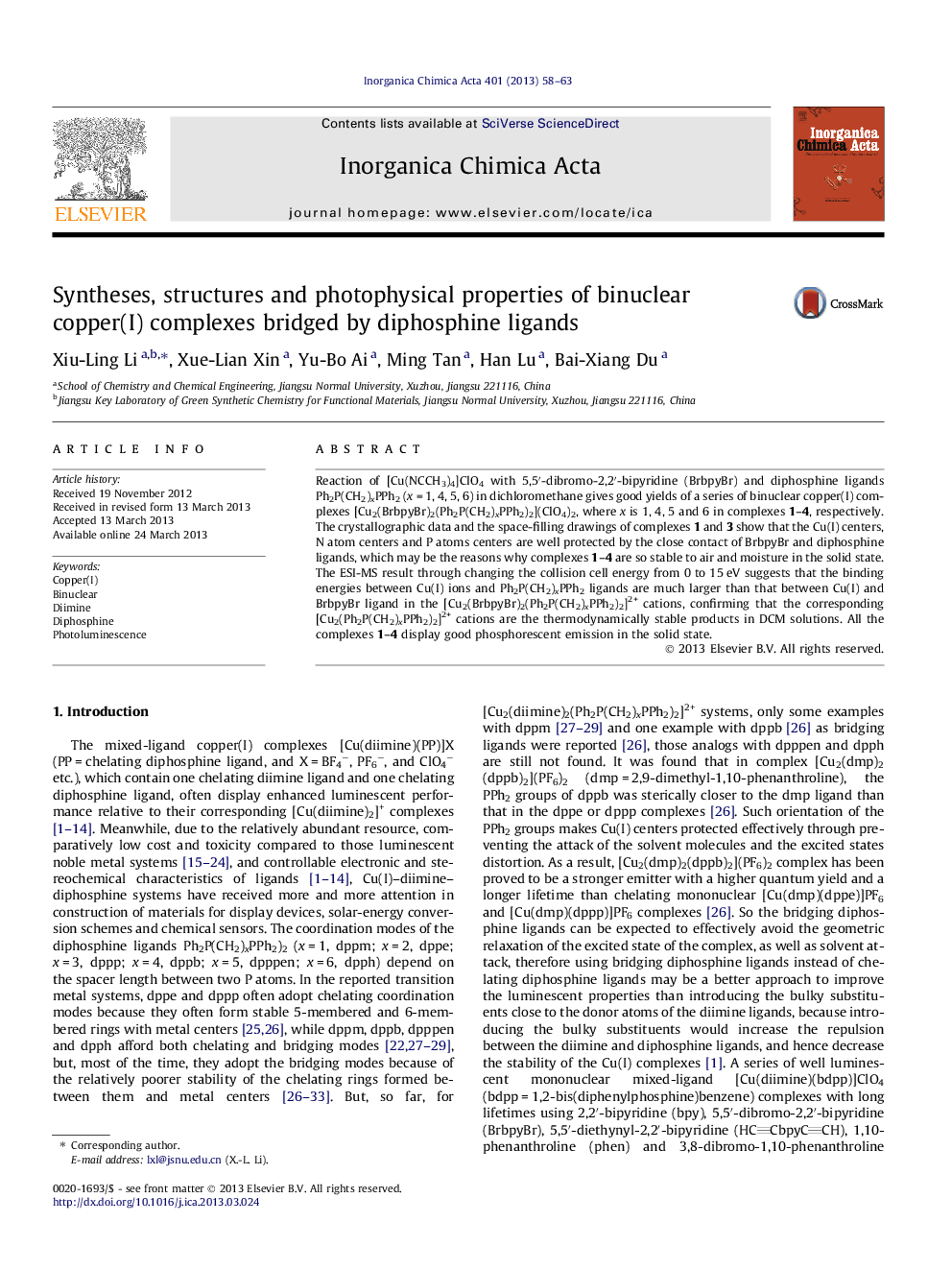| کد مقاله | کد نشریه | سال انتشار | مقاله انگلیسی | نسخه تمام متن |
|---|---|---|---|---|
| 1310419 | 1499186 | 2013 | 6 صفحه PDF | دانلود رایگان |

• Analysized why such complexes are stable to air and moisture from crystallography.
• Studied the binding ability between two ligands and Cu(I) ions through ESI-MS.
• Studied the absorption, emission spectra and luminescence lifetimes systematically.
Reaction of [Cu(NCCH3)4]ClO4 with 5,5′-dibromo-2,2′-bipyridine (BrbpyBr) and diphosphine ligands Ph2P(CH2)xPPh2 (x = 1, 4, 5, 6) in dichloromethane gives good yields of a series of binuclear copper(I) complexes [Cu2(BrbpyBr)2(Ph2P(CH2)xPPh2)2](ClO4)2, where x is 1, 4, 5 and 6 in complexes 1–4, respectively. The crystallographic data and the space-filling drawings of complexes 1 and 3 show that the Cu(I) centers, N atom centers and P atoms centers are well protected by the close contact of BrbpyBr and diphosphine ligands, which may be the reasons why complexes 1–4 are so stable to air and moisture in the solid state. The ESI-MS result through changing the collision cell energy from 0 to 15 eV suggests that the binding energies between Cu(I) ions and Ph2P(CH2)xPPh2 ligands are much larger than that between Cu(I) and BrbpyBr ligand in the [Cu2(BrbpyBr)2(Ph2P(CH2)xPPh2)2]2+ cations, confirming that the corresponding [Cu2(Ph2P(CH2)xPPh2)2]2+ cations are the thermodynamically stable products in DCM solutions. All the complexes 1–4 display good phosphorescent emission in the solid state.
Binuclear complexes [Cu2(BrbpyBr)2(Ph2P(CH2)xPPh2)2](ClO4)2 with all centres of Cu(I) ions, N and P atoms well protected by two kinds of ligands display good stability to air and mositure and exhibit phosphorescent emission in the solid state. The ionization behavior and the relative binding ability between Cu(I) ions and two kinds of ligands were studied through ESI-MS.Figure optionsDownload as PowerPoint slide
Journal: Inorganica Chimica Acta - Volume 401, 24 May 2013, Pages 58–63